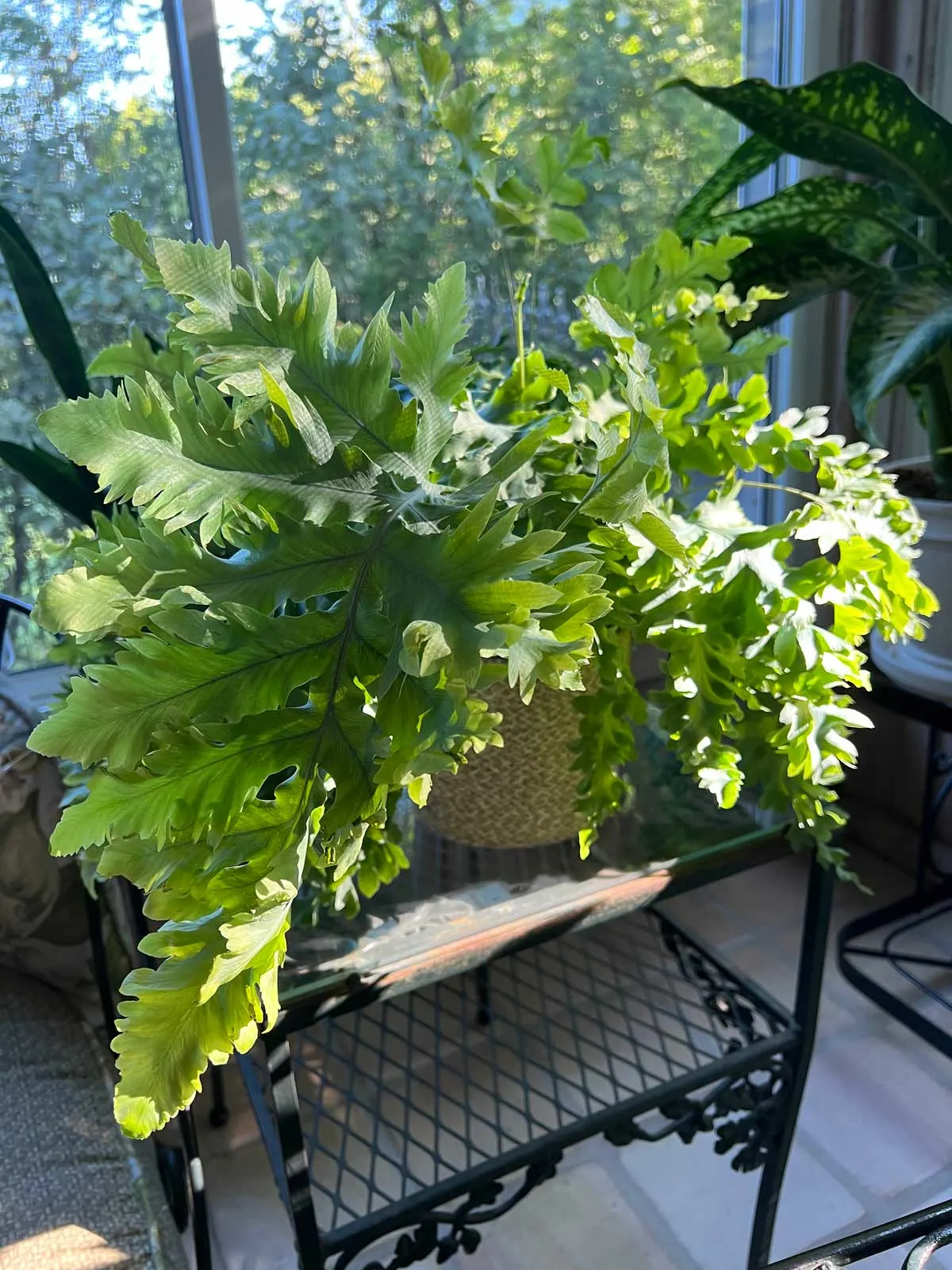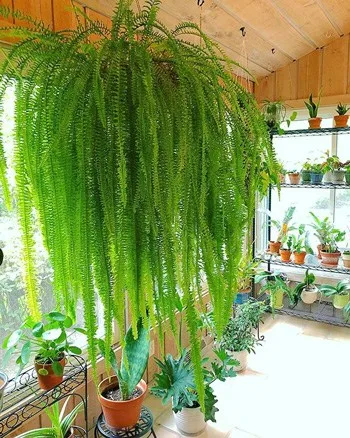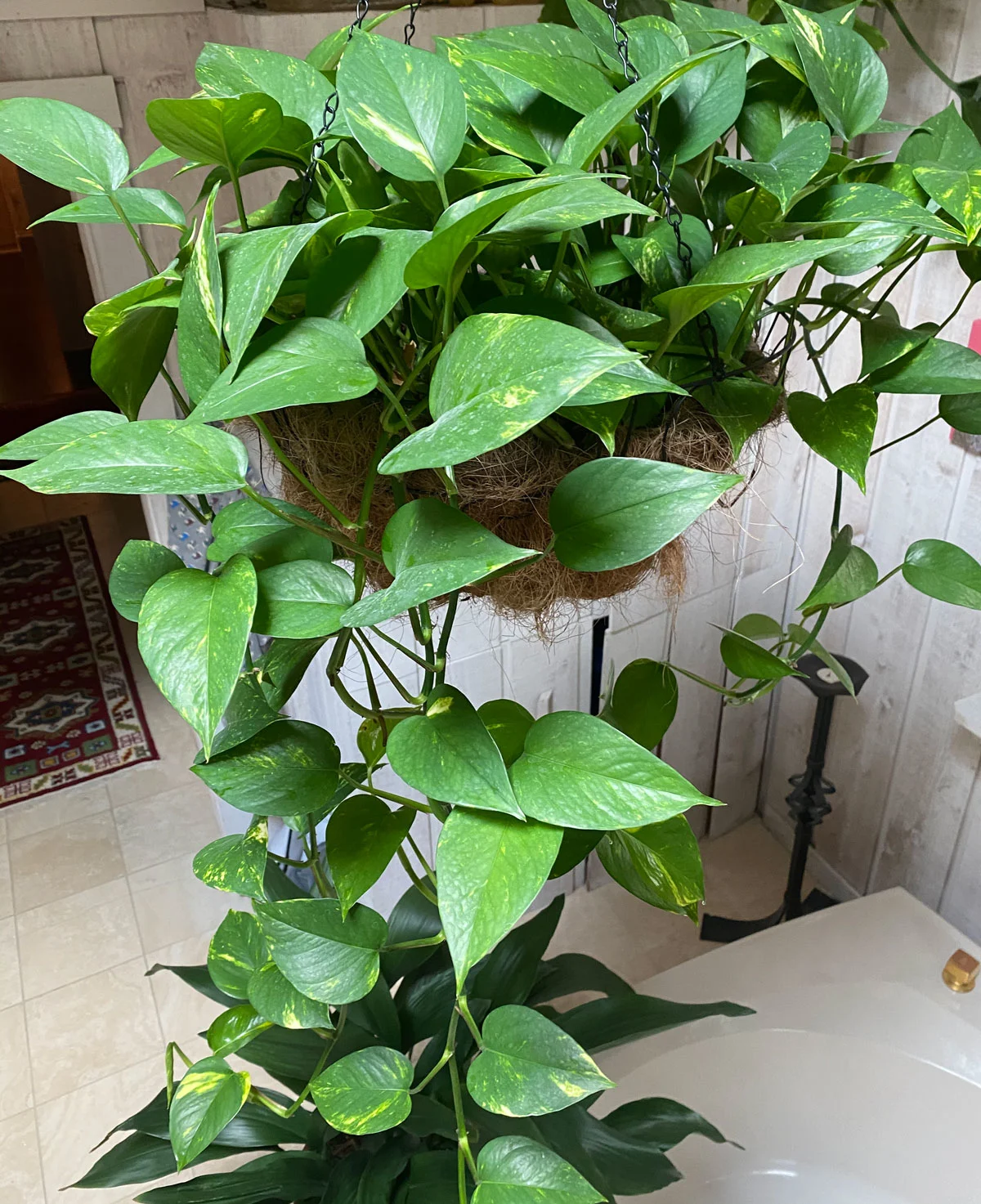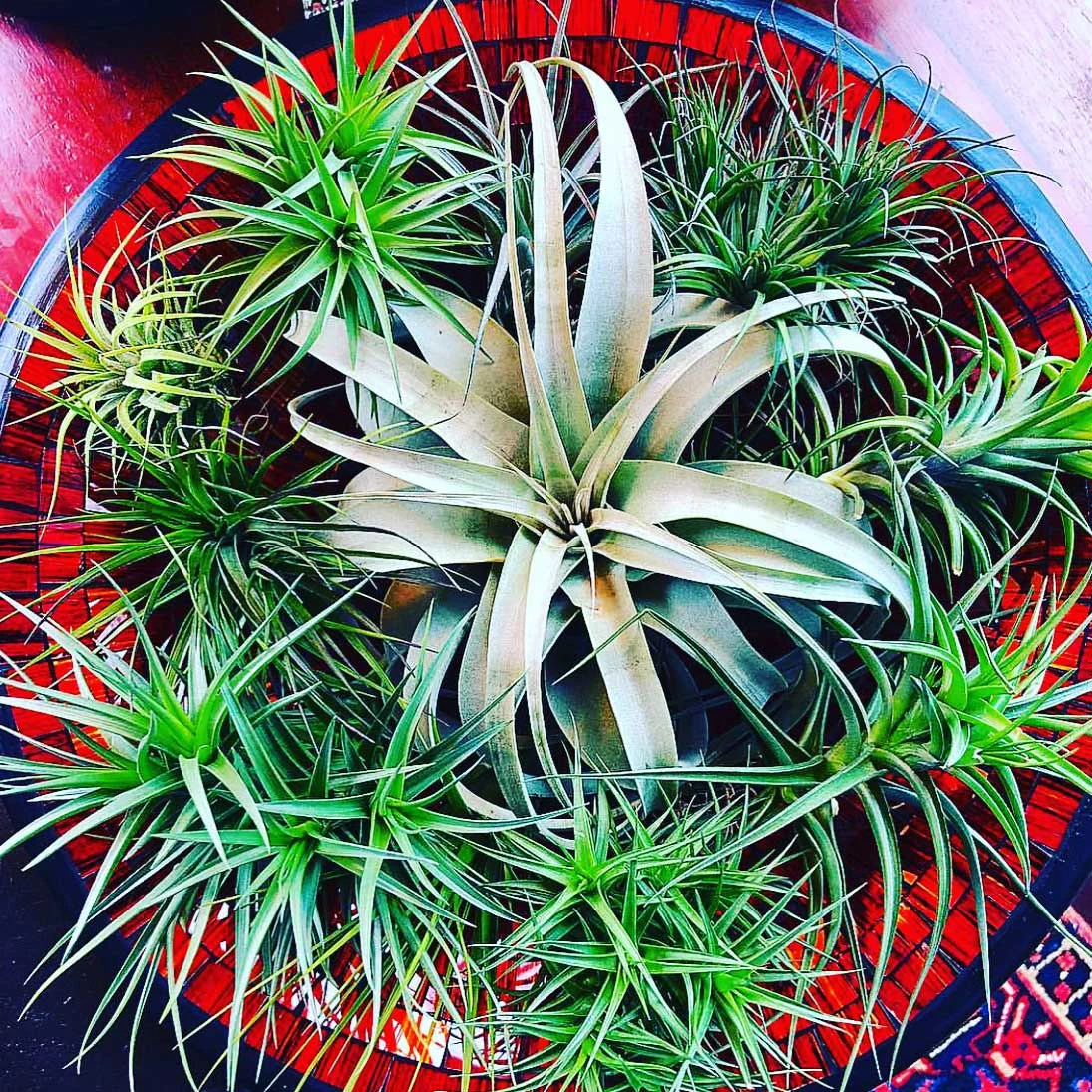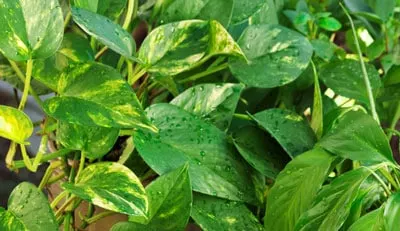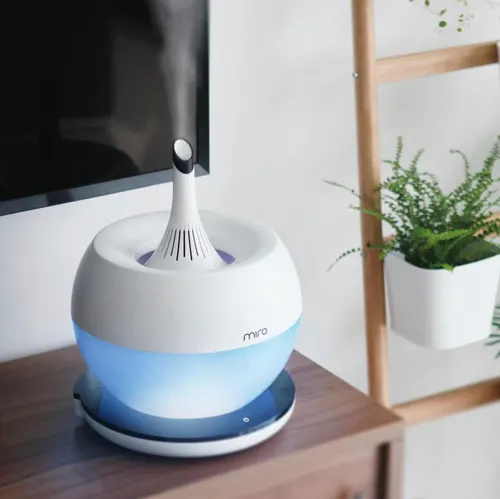Some of the links in this post may be affiliate links.
Transform your home into a tropical paradise with these 21 gorgeous fern varieties. There are many different fern types, and they can look quite different from each other, but all are equally graceful. Few plants evoke tranquility in your indoor space more than a fern, so why not create a peaceful environment in your own home?
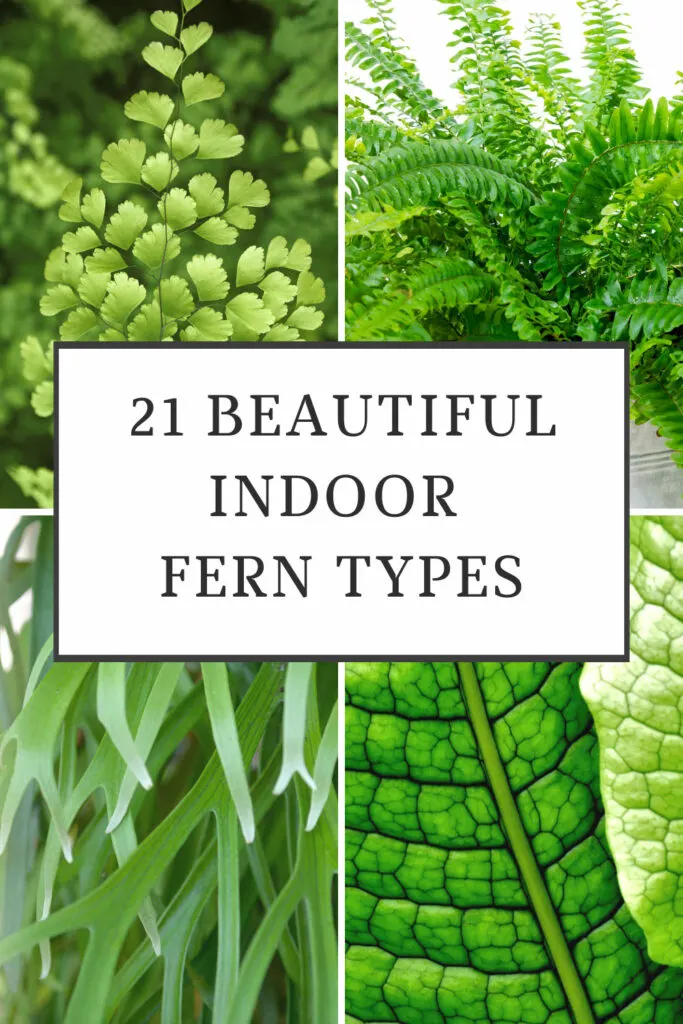
Ferns have a fascinating record of being some of the oldest living plants on Earth and are popular houseplant choices.
With their diverse sizes, textures and shapes, ferns add a touch of grace to your indoor spaces.
Although ferns have a reputation for being high-maintenance and finicky, there are many indoor fern varieties which prove otherwise.
This article will help you pick some beginner-friendly indoor Fern varieties that are a breeze to incorporate into your home décor.
Let’s now explore these 21 gorgeous and easy-to-care-for indoor fern varieties. At the very end of this article, I will discuss the most important tips to keep your ferns green and beautiful, while minimizing brown fronds.
Table of Contents
Table of Contents
21 Most Beautiful Indoor Fern Varieties
1. Nephrolepis exaltata (Boston Fern)
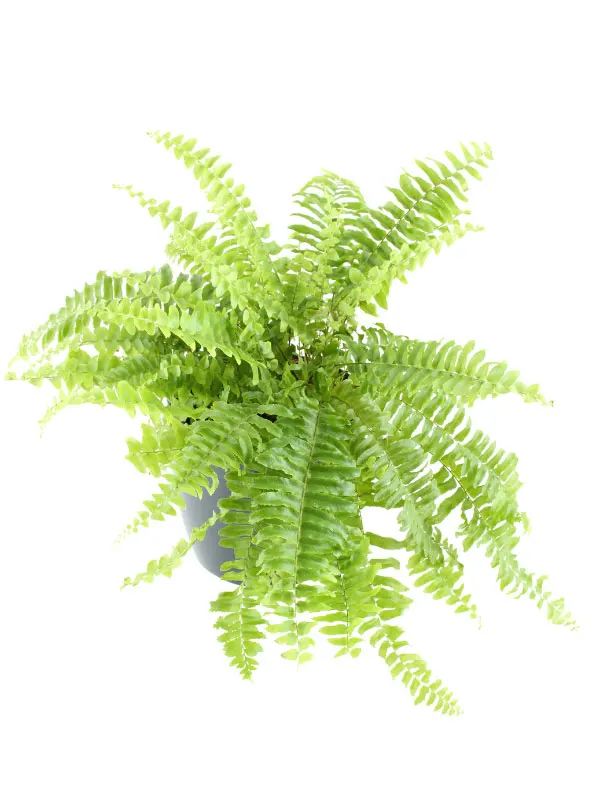
Nephrolepis exaltata, commonly known as the Boston Fern is one of the most popular fern varieties.
The plant has beautiful fronds which gracefully arch down from hanging pots and planters.
Boston ferns are readily available and have an excellent reputation for enhancing the aesthetics of a home and improving indoor air quality by removing harmful toxins.
They are great for beginners and thrive in high-humidity areas like bathrooms and kitchens.
2. Adiantum raddianum (Delta Maidenhair Fern)
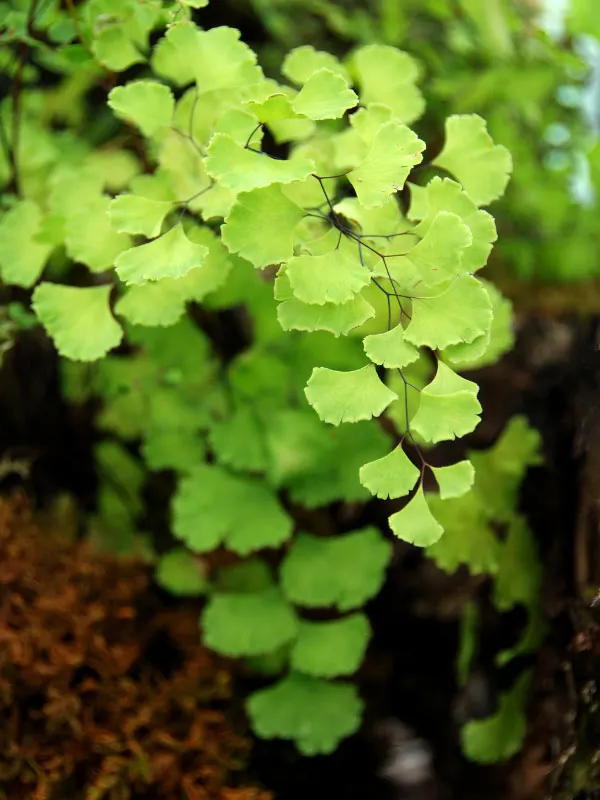
Adiantum raddianum is a gorgeous fern variety that has a native distribution from Mexico to Tropical America.
It has an elegant appearance with fragile fan-shaped fronds and slender black stalks that grow straight when young and slightly arch as they mature.
Growing maidenhair fern in hot and dry climates can be tricky as the plant demands a continuous moisture supply.
Check out my blog post on an easy way to grow maidenhair ferns. It will make it quite simple for you!
3. Platycerium bifurcatum (Staghorn Fern)
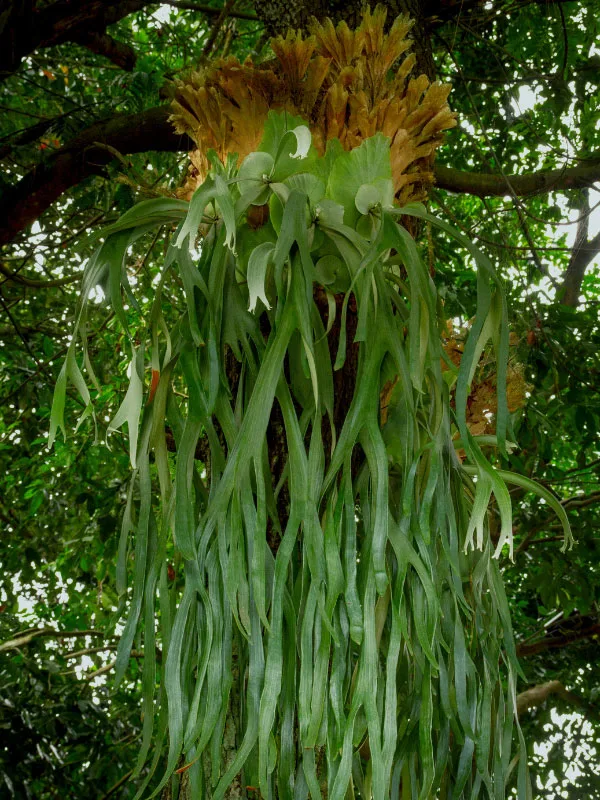
Platycerium bifurcatum, commonly known as the Staghorn fern or Elkhorn fern has an unusual appearance with its bifurcated, antler-like fronds.
The plant is native to Java, New Guinea and Eastern Australia, where it grows as an epiphyte. The best way to flaunt it’s weird-looking foliage is by hanging it from the wall.
Staghorn Fern has a slow-growing nature and reaches a maximum height of around 4 feet in 10-20 years.
As the plant grows, one can notice brown “shields” growing at its base, which many people often confuse with dead leaves and remove them. However, these shields must be kept intact to protect the roots.
4. Nephrolepis cordifolia (Lemon Button Fern)
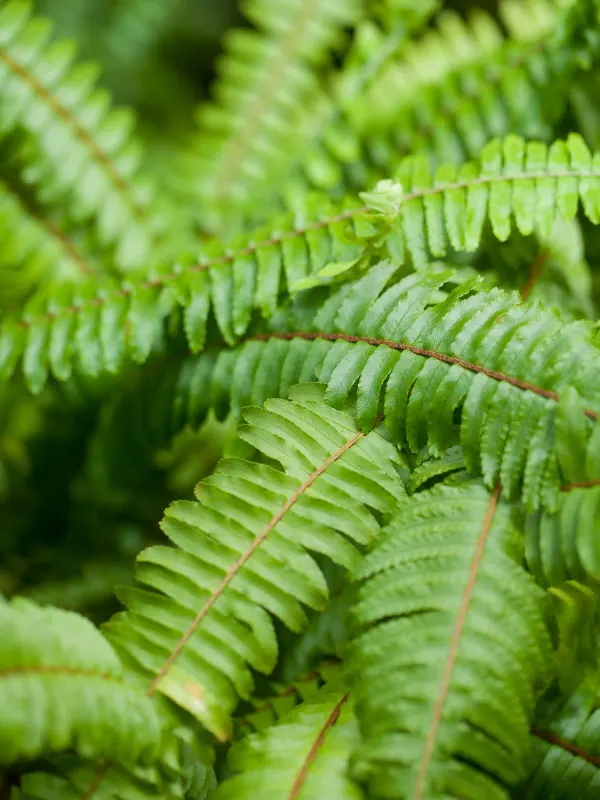
Nephrolepis cordifolia or Lemon Button Fern is an adorable fern with arched stems and tiny, button-shaped green leaves.
The plant also has a mild lemony scent, which explains why it’s called the lemon button fern. Indoor gardeners love this species for its hardiness and pet-friendly nature.
Lemon button fern is also a versatile variety you can grow in almost any type of container, including a vivarium or terrarium since they will stay relatively small.
5. Microsorum musifolium (Crocodile Fern)
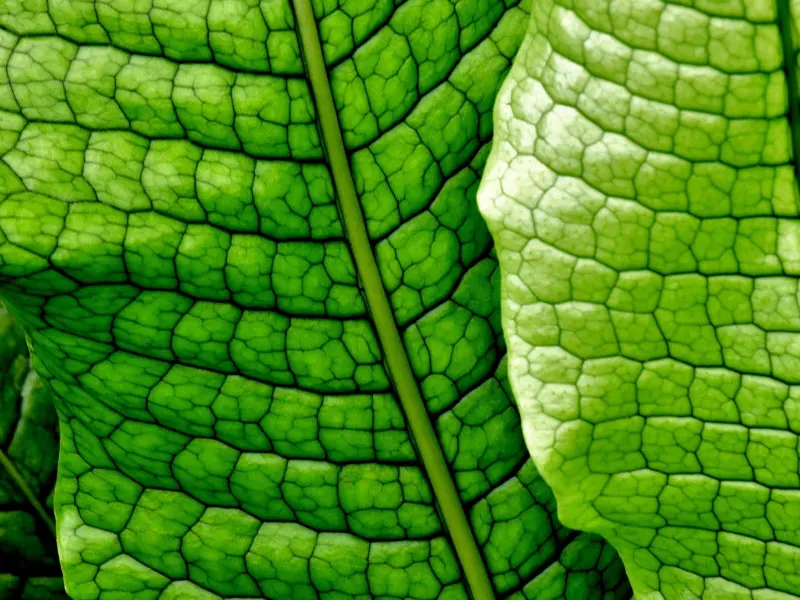
Microsorum musifolium, or Crocodile Fern, gets its name from the long, green, strappy fronds that feature crocodile-like scale patterns.
The scales become more pronounced with deep green venation as the leaves mature.
Crocodile ferns have a native distribution from S.Myanmar to New Guinea. It is an epiphyte which can reach heights up to 6 feet tall in an ideal growing environment.
Crocodile ferns make a fantastic addition to your indoor gardens as they pack plenty of character with their textural foliage. They are easy growers but demand a steady supply of moisture, both in the soil and in the air.
6. Asplenium nidus (Bird’s Nest Fern)
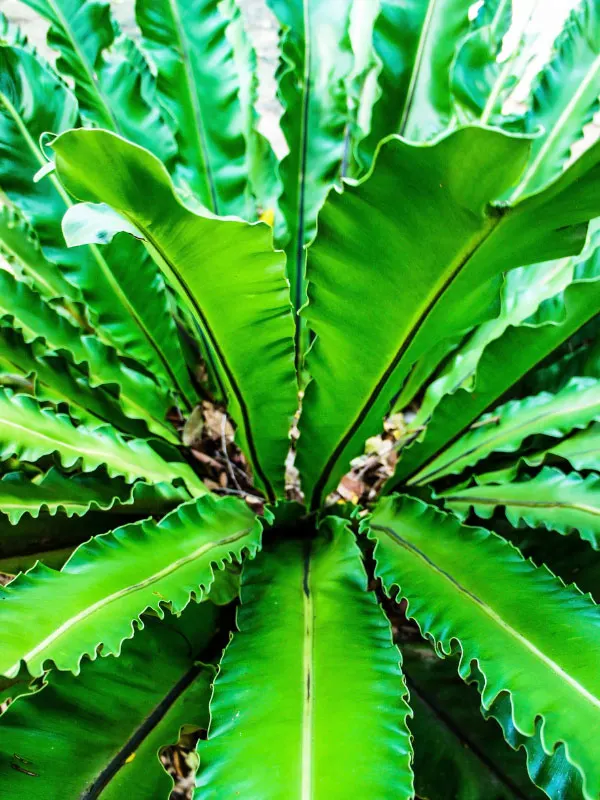
Asplenium nidus is an epiphytic fern variety native to tropical rainforests ranging from Malaysia to Queensland.
True to its name, the Bird’s nest fern has a rosette formation of erect and strappy green leaves that can grow up to 5 feet long.
Indoors, birds nest ferns maintain a more compact size, up to about 2 feet length or so, with a slow growth rate.
The species can thrive in average humidity conditions as long as the soil is kept moist, but an extra humidity boost will only result in healthier and shinier fronds.
7. Microsorum diversifolium (Kangaroo Paw Fern)
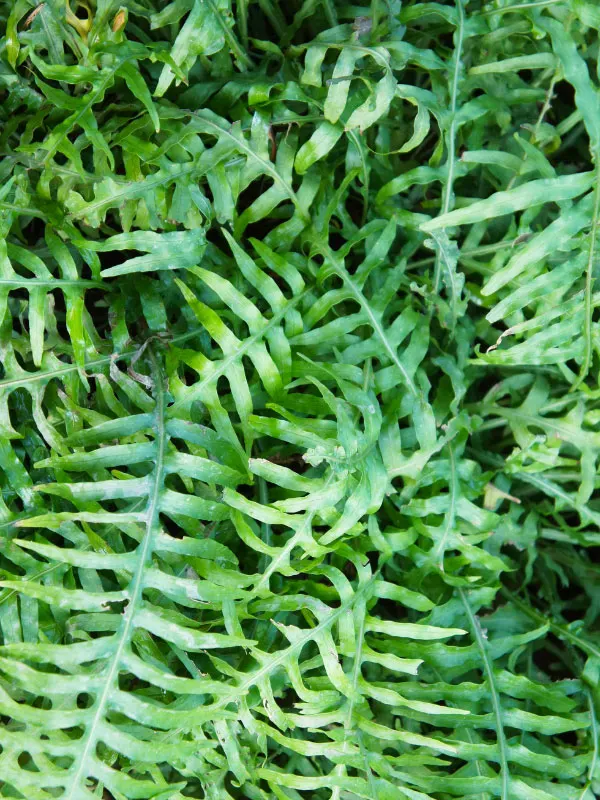
Microsorum diversifolium is one of the easy-growing varieties of Fern, which can thrive in lower humidity conditions, unlike many ferns.
The plant is also known as the Kangaroo paw fern for its large, lobate, slightly arching fronds that look tough and leathery.
The stems emerge from green-colored rhizomes which have a spreading habit and feature a slightly hairy texture.
Native to Australia, the Kangaroo fern is a slow-growing species, and its unique appearance adds an elegant touch to your home.
8. Dryopteris erythrosora (Autumn Fern)
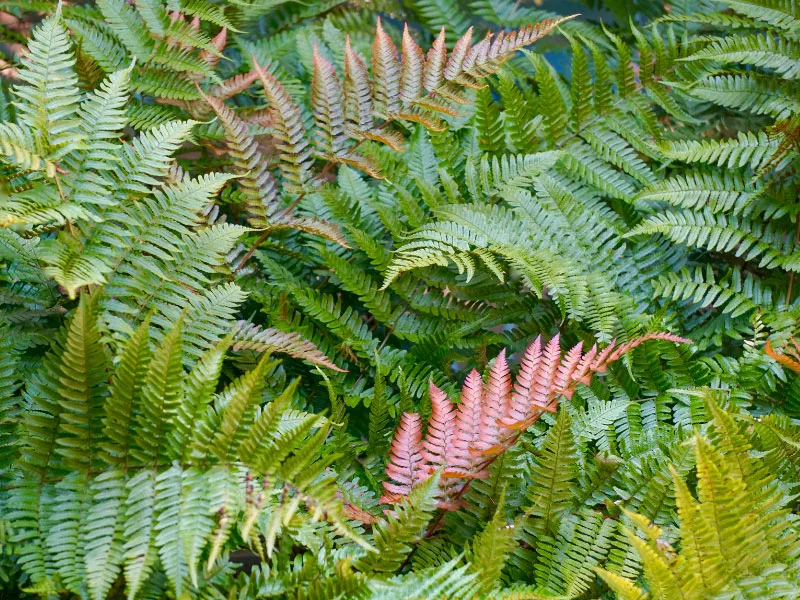
Dryopteris erythrosora is a stunning, low-growing, evergreen fern variety having a native distribution from China to East Asia.
The plant is also known as the Autumn Fern or Copper Shield Fern, as the newly emerged fronds feature a brilliant shade of orangish-red that perfectly contrasts with the green shade of matured fronds.
9. Davallia fejeensis (Black Rabbit’s Foot Fern)
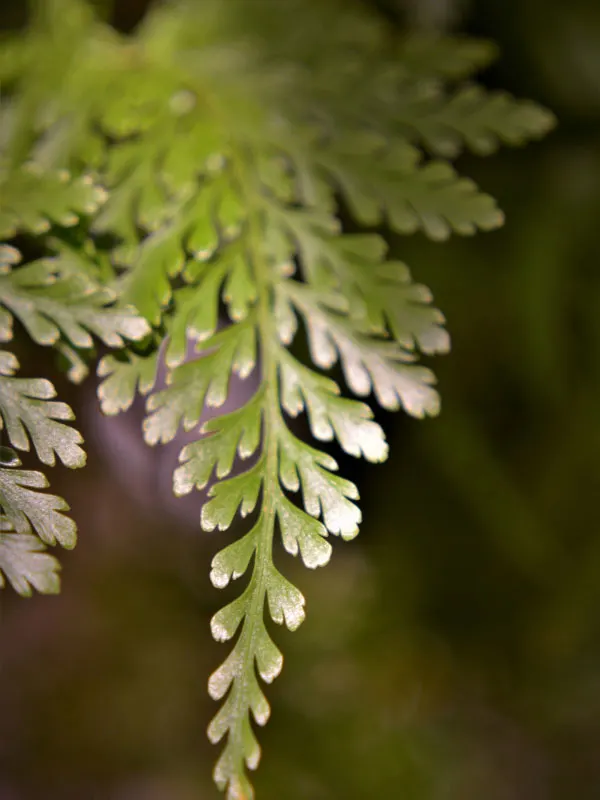
Davallia fejeenis or Rabbit’s Foot Fern is native to Fiji and looks quite mysterious, with fuzzy, rabbit-feet like projections that scramble out of the plant’s base.
These “feet” are, in fact, the rhizomes of the plant which absorb moisture and nutrients from the air and soil.
Delicate green fronds that resemble carrot tops grow out of wiry stems that emerge from these rhizomes.
Rabbit’s foot fern is best displayed in hanging pots and decorative planters to show off its soft and fluffy “feet.”
10. Phlebodium aureum ‘Davana’
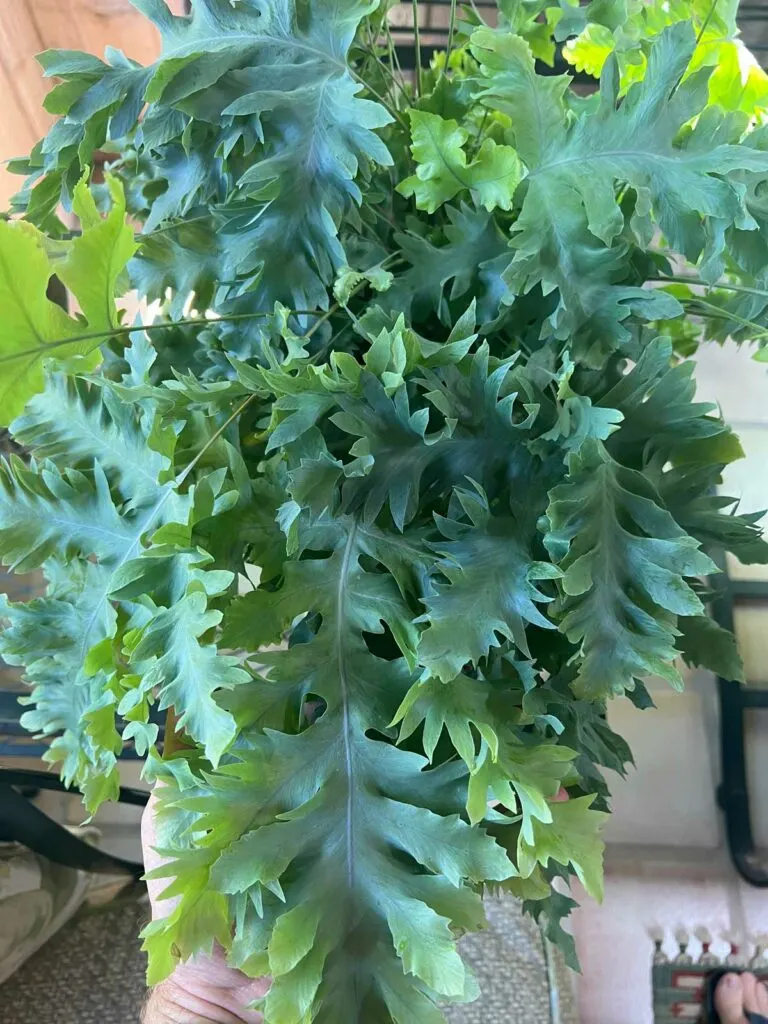
Phlebodium aureum ‘Davana’ is a beautiful indoor fern variety native to the tropical rainforests of Central and South America and the Caribbean.
The plant features elegant green fronds with fringed margins. Matured leaves develop a coat of powdery blue.
Davana fern has fuzzy projections similar to a Rabbit’s foot fern from which new leaves emerge, but the aren’t as pronounced.
The plant has a mounded habit making it a perfect choice for hanging baskets and desktops.
11. Phlebodium aureum ‘Mandaianum’
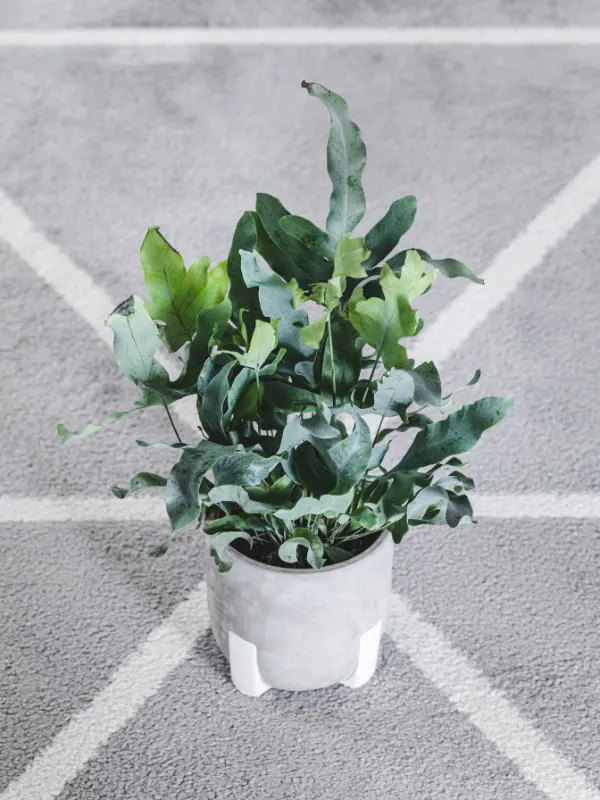
Phlebodium aureum ‘Mandaianum’ is variety of the Blue Star Fern. The species is very similar to the Davana fern, except that its arching fronds feature a wavy pattern and blueish-green color at the edges.
Mandaianum also has another name, the Golden Serpent Fern, as the undersides of the leaves develop small golden-yellow dots which are spores that the plant uses to reproduce.
The fern is most native to tropical and subtropical regions of South America. It prefers bright, indirect light and can cope well in low humidity conditions.
12. Pteris cretica ‘Mayii’ (Brake Fern)
Pteris cretica ‘Mayii’ or Brake Fern is an elegant variety of fern which has a wide native distribution from Africa to Europe and Asia.
The flat, pinnate fronds feature beautiful variegation with white and green shades, giving a distinct appearance to the plant.
However, beware that these fronds are a little brittle and susceptible to damage.
Despite its fancy appearance, Brake Fern is a non-fussy species and can still grow well in homes with a drier air. It is also tolerant to cold winter temperatures (not frost though!)
13. Pteris quadriaurita (Tricolor Fern)
Pteris quadriaurita is a gorgeous variety of fern that can brighten up your space with its tri-color foliage.
The shiny fronds feature captivating shades of bronze, red and green, earning the plant its other name, the Painted Brake Fern.
This species can grow up to 2 feet tall with a mounding habit.
Tricolor Fern is native to Southeast Asia and China and prefers bright, indirect light with moderate humidity levels. It is not frost-resistant.
14. Asplenium difforme x dimorphum (Mother Fern)
Asplenium difforme x dimorphum is a unique fern with beautiful waxy, evergreen leaves.
The plant is also known as the Mother Fern or Parvati Fern as it grows tiny plantlets or plant babies on its fronds which you can plant to grow new ferns!
It is a slow grower with a compact, mounding habit that looks elegant on desktops and windowsills.
Mother fern is a humidity lover but can adapt itself to low moisture levels. Soil should be moist but not wet.
15. Asplenium antiquum ‘Hurricane’
Asplenium antiquum ‘Hurricane’ is a one-of-a-kind fern variety that features highly twisted fronds that look like a hurricane.
Interestingly, the fronds only twist to the right to create a whirlwind appearance.
Some other common names for this plant include Hurricane Bird’s Nest Fern and Twisted Bird’s Nest Fern.
The Hurricane Fern needs extra humidity to maintain the shape and color of the leaves.
16. Asplenium antiquum ‘Victoria’
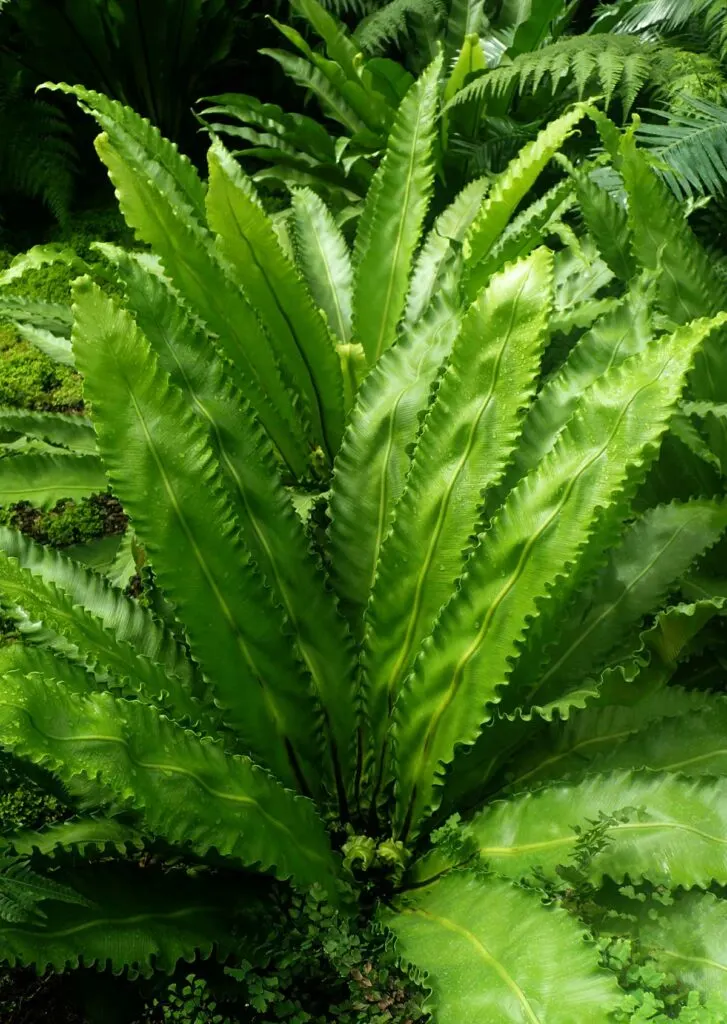
Asplenium antiquum ‘Victoria’, aka Victoria Bird’s Nest Fern, looks exotic with its tongue-shaped, ripple-edged fronds that form a beautiful rosette shape.
The crinkly appearance of this species adds an unusual element of interest to your interior décor.
Victoria fern desires high humidity and moisture levels. It’s a non-toxic, pet safe fern variety.
17. Phlebosia ‘Nicolas Diamond’
Phlebosia ‘Nicolas Diamond’ is a beautiful variety of fern that closely resembles the appearance of sea lettuce.
It has ruffled fronds that are bright green to dark green in color, and that grow along sturdy stems.
The spreading habit of this plant makes it an ideal choice to fill an empty corner. ‘Nicolas Diamond’ is a hybrid of Phlebodium aureum ‘Mandaianum’ and Pyrrosia lingua ‘Cristata’.
The plant inherits the best qualities of its parents – fast growth and hardiness, making it one of the best fern types for beginners.
It can thrive in average to low humidity levels and cool temperatures.
18. Asplenium antiquum ‘Leslie’
Asplenium antiquum ‘Leslie’, or the Leslie Fern is a gorgeous variety of the Bird’s Nest Fern which features curly fronds in a refreshing green color.
Leslie fern is one of the best fern types for smaller spaces as a result of its compact size.
High humidity levels with bright, indirect light are helpful.
19. Asplenium antiquum ‘Crissie’
Asplenium antiquum ‘Crissie’ or Crissie fern is another variety of the Bird’s nest fern.
The plant has a distinctive appearance with its flat, leathery fronds with forked tips.
Like other bird’s nest fern species, the Crissie fern maintains a large open bowl shape with an upright, arching habit.
It can thrive in moderately humid conditions with moist soil.
20. Pellaea rotundifolia (Button Fern)
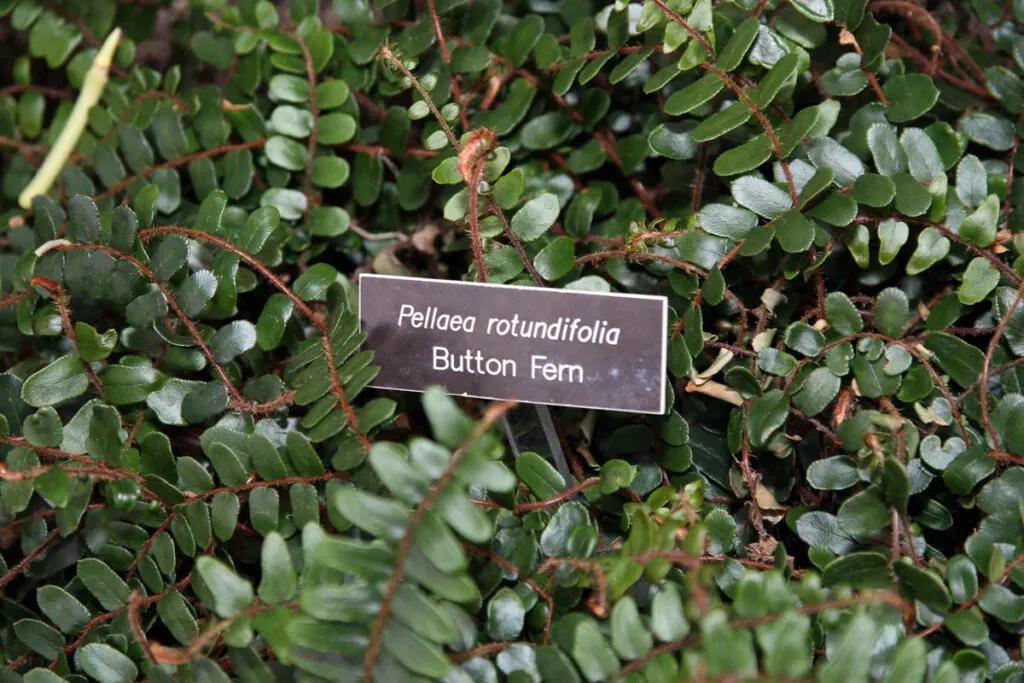
Pellaea rotundifolia or the Button fern, is a compact fern variety with round green leaves that look like cute buttons.
Pellaea rotundifolia is actually a synonym for the accepted species name, Hemionitis rotundifolia which is native to New Zealand.
The arching fronds develop a mounding habit which is well-suited for displaying in containers and hanging baskets.
The plant doesn’t demand too much attention except for a good amount of bright, filtered light, moderate humidity and attention to watering.
21. Nephrolepis obliterata (Kimberley Queen Fern)
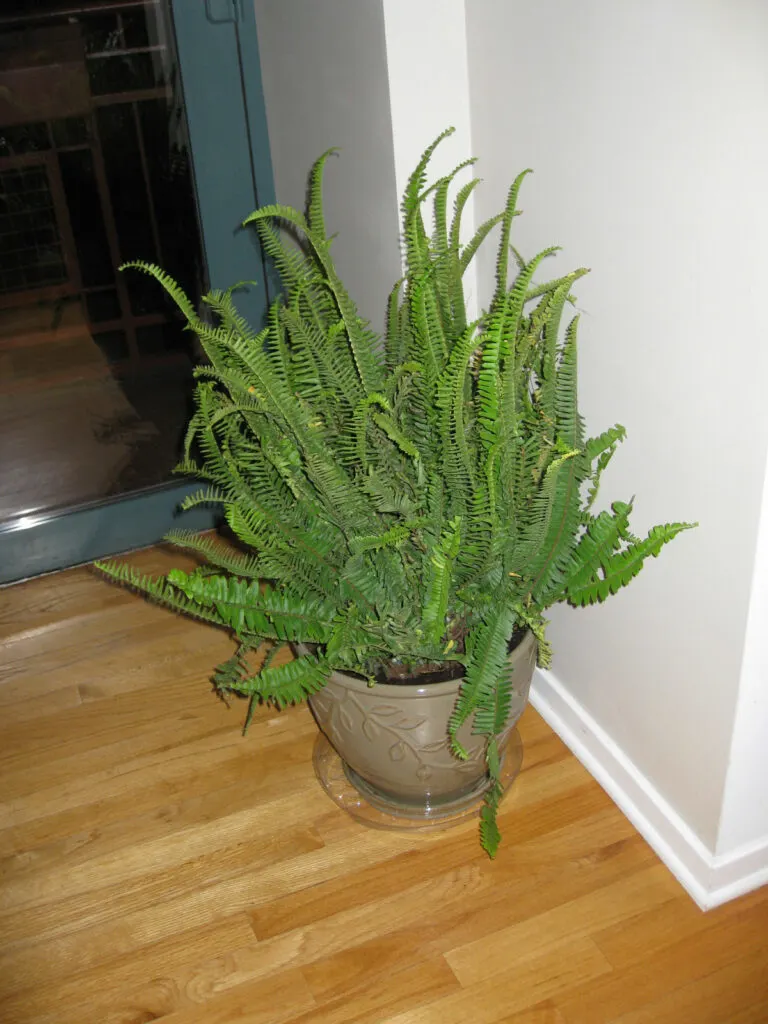
Nephrolepis obliterata, or the Kimberley Queen Fern is an attractive fern variety native to Australia.
The plant features long, sword-like stems, which explains the common name Australian Sword Fern.
Gardeners love this fern variety for its compact, upright growing habit and non-fussy nature.
How do you Care for Ferns?
Contrary to popular belief, indoor ferns are generally not very fussy as long as you can be attentive to watering.
They can thrive in darker spaces than most houseplants, but still appreciate being near a window that gets no sun, but they will even do well with some morning sun indoors.
The most important part in watering ferns is never to allow the potting mix to dry out. In fact, you should water as soon as the surface of the soil starts to feel dry.
Although many ferns will continue to look great if you can keep up with watering, they will all appreciate extra humidity. Choosing a great humidifier like the Levoit 6L Unltrasonic Humidifier (link to Amazon) will help you go the extra mile to keep the fronds fresh, beautiful and green.
I hope you’ve enjoyed this post on indoor fern varieties. Do you love ferns? Comment below. I’d love to hear!

